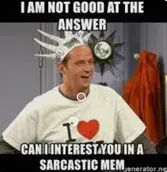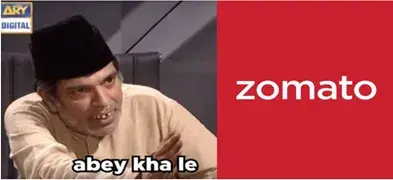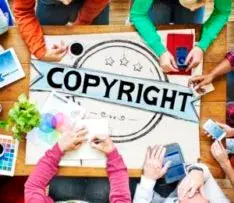By Ananyaa Banerjee and Soumya Sehgal
While “Social” Media was initially meant to bridge the distance between people all over the world and build relationships, the same has quickly evolved as a great platform to share content, ideologies etc. Presently, the entire social media landscape contains pictures, videos or media of any sort with a humorous or relatable context. In fact, the usage of social media platforms has gradually transitioned from personal interaction to sharing of memes. While the common man may not invest a lot of thought behind the creation and/or consequence of a meme, the same does entail a certain amount of liability as discussed in detail in this article.
TYPES OF MEMES AND PROTECTION UNDER COPYRIGHT
A meme can be of two types: The first type is where the person creating the meme (commonly known as a “memer”) uses pictures or videos from an original content to create a meme. For example the famous character of ‘Chandler Bing’ from the popular television show ‘Friends’ is used by many memers to depict sarcasm.

In this case, the copyright in the picture of ‘Chandler Bing’ would lie with the producers of the show. The memer, not being the creator of the picture, is copying it and using the same to depict his content. Therefore, if the producers of the show can prove that the meme infringes upon their copyright, they may be able to stop it from being shared.
The second type is where the memer has created the meme with pictures and videos, the underlying copyright in which belongs to himself. A meme like this may be defined as an artistic work made by one’s own talent, labour, and judgement, etc which does not infringe on an existing copyright. However, sharing/reproduction of such kind of memes without prior approval of the memer may be considered copyright infringement, and the creator of the “memed” picture may be able to restrain others from using it without permission. The liability of the copyright infringement of the memer depends upon the images or videos used by that person.
The key question here is whether the meme was illegally appropriated by utilising a substantial or material portion of the original copyrighted work, or whether an essential aspect of the artist’s original vision was substantially reproduced. The physical features of the allegedly unauthorized copy, as well as the medium of expression, may change, along with certain aesthetic variations. However, if there is any substantial imitation or copying of the original work, then the meme will be deemed to be an infringement.[1]
However, it is also important to note that obtaining the permission or consent of the owner of the copyrighted work for creation of a meme may not always be feasible, and in most of the situations, the owner of the original work may not even be known.
PROTECTION UNDER FAIR USE ENSHRINED UNDER THE COPYRIGHT ACT, 1957
The “fair use” doctrine comes at play as a legitimate defense in cases of copyright infringement. The Copyright Act, enlists four factors to determine if such use of copyrighted work is “fair” or not, though none are determinative[2].
First Factor: Whether the purpose and/or use of the copied work is of a commercial nature. In most cases, memes are usually created for a recreational and entertainment purposes and there is no element of any commercial use or economic gain. Therefore, most of the memes satisfy the first factor of fair use doctrine. However, if any meme is created to generate revenues or for any promotional purposes without the required permissions from the owner of the copyright work, the same would constitute commercial exploitation and therefore, the memer in such cases cannot claim any defense under the doctrine of fair use.
Second Factor: Nature of the copyrighted work- Almost every meme is taken from an already published material so as to increase its relatability factor. In such case, the original author has exhausted his right of first public appearance and the memer can claim a defense under fair use doctrine. However, the defense under the fair use doctrine shall not be applicable if the memer borrows content from an unpublished work.
Third Factor: The amount and substantiality of the copyrighted work used- If the memer just takes a single joke or still from an original work such as a television show or a movie, then, substantial amount of the original work is not copied, and fair use doctrine can be applied. However, if the original work from which the content is borrowed is a single photograph or any other single frame visual artwork, then it would be considered as borrowing the entire artistic work and constitute an infringement.
Fourth Factor: Effect on the potential market- As stated above, memes are usually made for recreational purposes and no commercial gain is expected out of it. Each meme, even though created from a common original work, is unique. Further, even the target audience for the ‘original work’ and ‘memes’ are most often different and it rarely affects the viewership of the original works. Therefore, memes satisfy the fourth factor of fair use doctrine.
EXECPTION TO THE APPLICABILITY OF FAIR USE DOCTRINE
However, as a word of caution, if a meme is intended to harm the society or if it violates the Right to Privacy enshrined under Article 21 of the Constitution of India, then there is no defense available in favour of the meme creator. In fact, the memer, cannot even exercise his defense of Right to freedom of speech and expression enshrined under Article 19 of the Constitution of India[3] in such cases.
In a plethora of cases, the Indian courts have held that the right to criticize or imitate a person through memes is not exclusive and is limited to the point where the rights of the other person are not affected. For example, recently, BJP’s Youth Wing leader Priyanka Sharma (Defendant) was asked to apologize to the prominent leader and the Chief Minister of West Bengal Ms. Mamata Banerjee, for defaming her character, by posting a morphed image of hers on social media. The Supreme Court did not give any leverage to the Defendant, even though she argued that she did not “create” the meme and only “shared” it for humour. The Supreme Court held that Freedom of speech and expression cannot be denied at any time, but faces its end when such freedom violates the rights of other people.[4]
The sharing of such defamatory meme by the defendant has been stopped by the court. However, it is the meme creator who should be identified at the first instance so that the meme can be stopped from being shared to a large section of society. According to The Information Technology (Intermediary Guidelines and Digital Media Ethics Code) Rules, 2021, if the meme is against the sovereignty and integrity of India, the security of the State, friendly relations with foreign States etc., then the meme creator/first originator can be identified by the intermediaries (Facebook, Instagram etc) by a judicial order passed by a court of competent jurisdiction or other competent authorities mentioned in Rule 4(2) of the said rules.[5]
One may conclude that the use of memes on social networking sites is generally ‘fair use’ with exceptions as stated above. The use of this doctrine requires a case to case analysis of facts; no blanket protection can be granted. The issue regarding fair use of memes has not been subjected to litigation till now in India.
COMMERCIAL USE OF MEMES
It is understood that commercial use of a meme would not come under the ambit of fair use doctrine, and the owner of the original copyrighted work can claim an infringement action against the meme creator. However, it is pertinent to note that if a corporation is creating its own meme without copying any original artistic work, then circulation of the same by third parties, even if done for commercial purposes, does not call upon any copyright infringement. Businesses are interested in utilising memes as a promotional tool. In fact, many companies have made meme marketing very essential part of its marketing campaign.
For example, Zomato has used photograph of the famous Pakistani Comedian Moin Aktar as Harmonium Chacha, for promoting and marketing purposes. In this case, the owner of the copyrighted work in the picture of the Harmonium Chacha are the producers of the film, and Zomato has used the same to promote its business.

On a day to day basis we see many companies/organizations, actively promoting their business through memes. The memes often refer to famous movie characters or pictures which have gained popularity. This kind of positive promotion helps the organization in getting more publicity, and also the owner of the original copyrighted work in getting more viewership of the said clip/scene/movie. Therefore, if the company/organization duly takes the necessary permissions from the owner of the original copyrighted work while creating memes, then both the company as well as the owner of the copyrighted work can gain benefits from the same. The same would give a positive promotion to both the parties, thereby creating a symbiotic relationship. Besides, the companies can also avoid unnecessary legal actions by relying upon such mutually beneficial relationship.
There are instances (even though rare) where the owners of the original artistic works have diligently taken action against the copyright infringement. The celebrity cats, Keyboard Cat and Nyan Cat have protected their intellectual property rights by winning a lawsuit against corporate giant Warner Bros[6]. In this case the owners of the original copyright work have successfully sued Warner Bros and 5th Cell Media for using their creations in the game “Scribblenaughts” without their permission. The owners of the original copyright work were given compensation for their work, and the famous felines will continue to appear in the game.
In yet another case, Grumpy Cat Limited sued Grenade Beverage for using the cat’s iconic image to market its new cappuccino drink, Grumppuccino without their permission. Grumpy Cat Limited has successfully won the lawsuit.[7]
MEME-OLOGY LITIGATION IN INDIA VIS-VIS OTHER COUNTRIES
Till date, India has not witnessed any meme-ology litigation. In the United States of America, the jurisprudence pertaining to parody such as memes etc. is almost the same as that of India. Even USA recognizes the parodies within the ‘fair use’ exception, if the meme satisfies the four statutory factors as laid above in the present article.
United Kingdom has implemented the EU Copyright Directive, which provides exceptions to caricature, parody and pastiche.[8] Similar to the Indian and USA laws, even UK protects the memes under the doctrine of fair use/dealing, provided the meme is not used for commercial purposes. Section 30A of the Copyright, Designs and Patents Act, 1988[9] in UK protects caricature, parody and pastiche under fair dealing.
Further, several countries including India have come up with intermediary guidelines to be followed by social media websites such as Facebook and Instagram, whereby they are instructed to maintain a strong surveillance on any uploaded content to ensure the protection of rights such as the right to privacy and protection against defamation. In India “The Information Technology (Intermediary Guidelines and Digital Media Ethics Code) Rules, 2021” were recently enacted by the Ministry of Electronics and Information Technology, which mandate that intermediaries such as Facebook, Instagram etc., to block the access of any unlawful information within 36 hours upon an order from the court, or the government. Elsewhere, European Union has come up with the EU Directives for Copyright, Article 17[10] of which prescribes that, information service providers that store and provide information to public at large have to ensure the rights of the rightholders in protecting their content on such platforms.
CONCLUSION
A meme should serve the purpose of fun and entertainment to the audience without violating rights of any individual and should not be created for the motive of commercial exploitation. A copyright infringement occurs when proper authorization and consent from the copyright owner is missing on the part of the creator of such a meme. It is advisable for young creators to seek proper approvals from the owners of the work prior to utilising the same. Creation of meme for amusement is fine but if used for the purpose of business or advertising one should procure necessary consents and license from the copyright owners to avoid facing any kind of legal liability.[11]
[1] Aishwaria S Iyer, Wbnujs, Kolkata And Raghav Mehrotra, Jindal Global Law School, Sonipat, A Critical Analysis of Memes and Fair Use
[3] https://thedailyguardian.com/analysing-copyright-issues-associated-with-memes-in-india/
[4] https://blog.ipleaders.in/memes-study-defamation/#_ftn5
[5] Rule 4(2) of The Information Technology (Intermediary Guidelines and Digital Media Ethics Code) Rules, 2021.
[6] Charles Schmidt & Christopher Orlando Torres v. Warner Bros Entertainment CV 13-02824
[7] https://theweek.com/articles/459512/7-internet-memes-who-sued
[8] Directive 2001/29/EC of the European Parliament and of the Council of 22 May 2001 on the harmonisation of certain aspects of copyright and related rights in the information society, Article 5(3)(k)
[9] Section 30A, Copyright, Designs and Patents Act, 1988
[10] DIRECTIVE (EU) 2019/790 OF THE EUROPEAN PARLIAMENT AND OF THE COUNCIL of 17 April 2019 on copyright and related rights in the Digital Single Market and amending Directives 96/9/EC and 2001/29/EC, Title IV, Article 17.
[11] https://thedailyguardian.com/analysing-copyright-issues-associated-with-memes-in-india/
A. Sandhya Parimala, Junior Associate at S.S. Rana & Co. has assisted in the research of this article.
Related Posts


